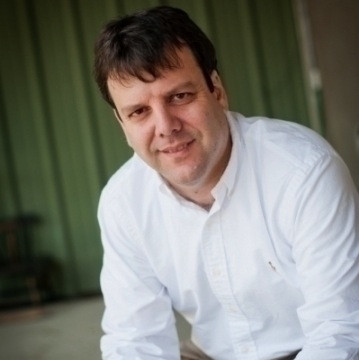Rob Horowitz: The Ultimate City: Bohemians, Gays & Jobs
Tuesday, June 18, 2013
Today’s highly mobile knowledge workers–the key to economic growth in a global economy where the talent and skills of the workforce is a prime difference-maker–choose where to live more for the qualities communities offer than for specific job-related reasons. As a result, “quality of place”, defined by Richard Florida, author of “The Rise of The Creative Class” as the “unique set of characteristics that defines a place and make it attractive”, is not only important to whether a city or town is a good place to live, but it also is a major factor in building a thriving economy.
More than one-in-ten Americans move each year and among young highly educated workers this percentage is far higher. This critical sub-set of the workforce tends to settle in communities where there is a diversity of ethnic groups and lifestyles, a vibrant street life including a broad range of music and art options and plentiful outdoor recreational opportunities.
As a general rule, they are more attracted to cities than suburbs. Also, since people are getting married at later ages and delaying having children, the traditional factors that drove people to the suburbs such as quality public schools and a house and a yard for ones’ family are less decisive.
GET THE LATEST BREAKING NEWS HERE -- SIGN UP FOR GOLOCAL FREE DAILY EBLASTDiversity and openness are of particular importance. For example, there is a solid positive correlation between the percentage of gay people in a community or region and the growth of the critical high technology sector of the economy, according to Richard Florida: He is not making the absurd argument, as some critics have caricatured, that gays and lesbians directly generate high technology growth. Florida’s persuasive case backed up by compelling data is that the proportion of gays in a community is a strong sign of the openness and tolerance that attracts knowledge workers and young entrepreneurs. “…We see a strong and vibrant gay community as a solid leading indicator of a place that is open to many different kinds of people,” said Florida.
Similarly, the concentration of artists, designers and musicians in a particular area—measured by Florida in his so-called “Bohemian Index” also correlates positively with the growth of new technology in a particular area. A threshold percentage of these folks contribute as well to the kind of varied and interesting street life that attracts skilled technology workers and companies.
While “quality of place" is increasingly important to economic growth, it is by no means the only factor. Other factors such as business-friendliness, tax structure, access to capital, and the cost of energy still play important roles, along with the over-all quality of the workforce.
Still, it does give Providence and its surrounding towns an important economic asset to maximize. The high quality and variety of art and music ranging from RISD's Art Museum to Lupo's, along with plentiful recreation options including beaches that are close-by make the Providence metro area attractive. And the recent adoption of same sex marriage legislation, along with the rising and visible Latino population, is another indicator of the area’s openness and diversity.
As part of any state or municipal economic growth plan, a proactive strategy to capitalize on this “quality of place" to keep more of our college graduates home and attract talented young people from around the nation is a must.
Rob Horowitz is a strategic and communications consultant who provides general consulting, public relations, direct mail services and polling for national and state issue organizations, various non-profits and elected officials and candidates. He is an Adjunct Professor of Political Science at the University of Rhode Island.
Related Articles
- Rob Horowitz: Imagine Democracy, Powered Digitally
- Rob Horowitz: Obama Puts Retiree Entitlement Programs on the Table
- Rob Horowitz: Universal Background Checks Gain Traction
- Rob Horowitz: ‘Fiscal Cliff’ Notes
- Rob Horowitz: Immigration Reform Moves to the Front Burner
- Rob Horowitz: President Hillary Clinton? Not So Fast
- Rob Horowitz: WA Bridge Collapse A Wake-Up Call For Rhode Island
- Rob Horowitz: 5 Reasons for New Year’s Day Optimism
- Rob Horowitz: Important Climate Change Milestone Exceeded
- Rob Horowitz: Progress on Comprehensive Immigration Reform
- Rob Horowitz: Bob Woodward Goes Off the Rails
- Rob Horowitz: Let’s Get Serious About Prescription Drug Abuse
- Rob Horowitz: RI’s Congressional Delegation—Afraid of the Elderly
- Rob Horowitz: Chuck Hagel is an Excellent Choice for Secretary of Defense
- Rob Horowitz: Let’s Celebrate RI’s Adoption of Marriage Equality
- Rob Horowitz: Republican Orthodoxy on Marriage Equality Cracking
- Rob Horowitz: Climate Change Adaptation Moves on to the Public Agenda
- Rob Horowitz: Momentum Builds for Marriage Equality
- Rob Horowitz: Rutgers President Ducks Responsibility On Rice
- Rob Horowitz: Congress Should Keep A Lid On Student Debt
- Rob Horowitz: New Media Trends Accelerate
- Rob Horowitz: Signs of Life for Grand Bargain
- Rob Horowitz: How The Boston Marathon Tragedy Brings Us Together
- Rob Horowitz: Obama Proposes Common Sense Gun Policies
- Rob Horowitz: The Ties That Bind Help Us Weather the Storm



